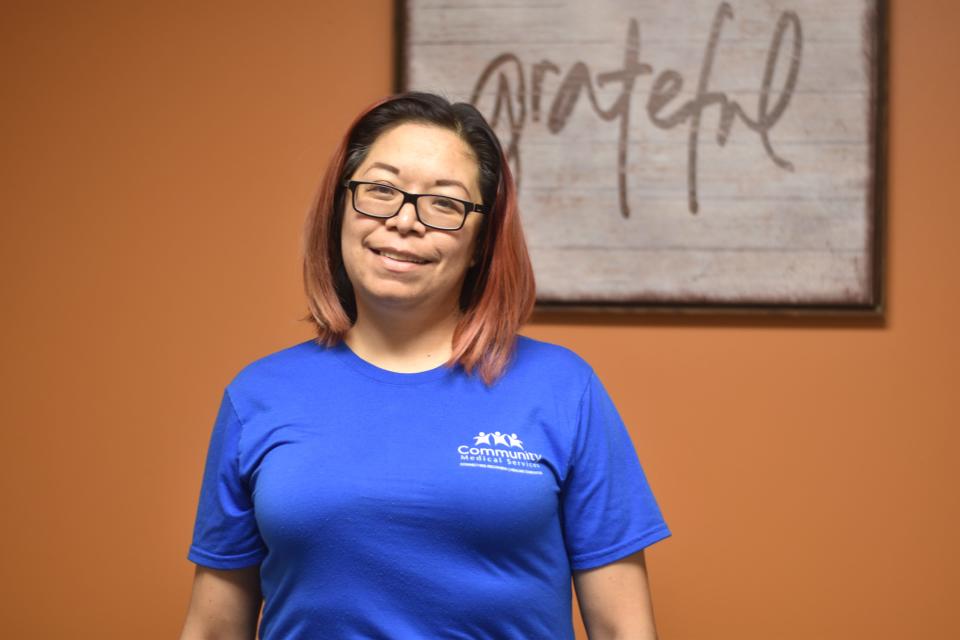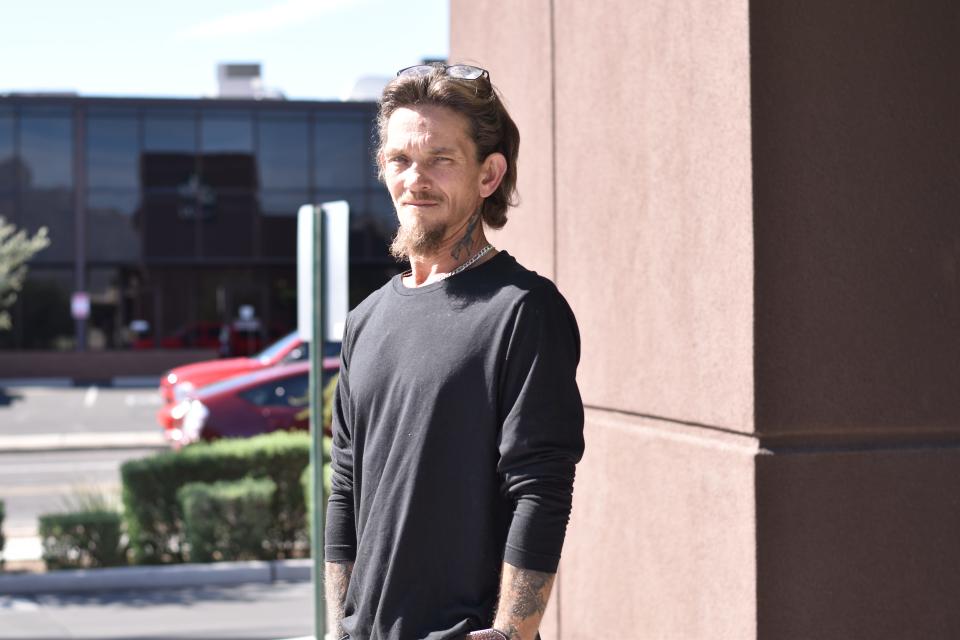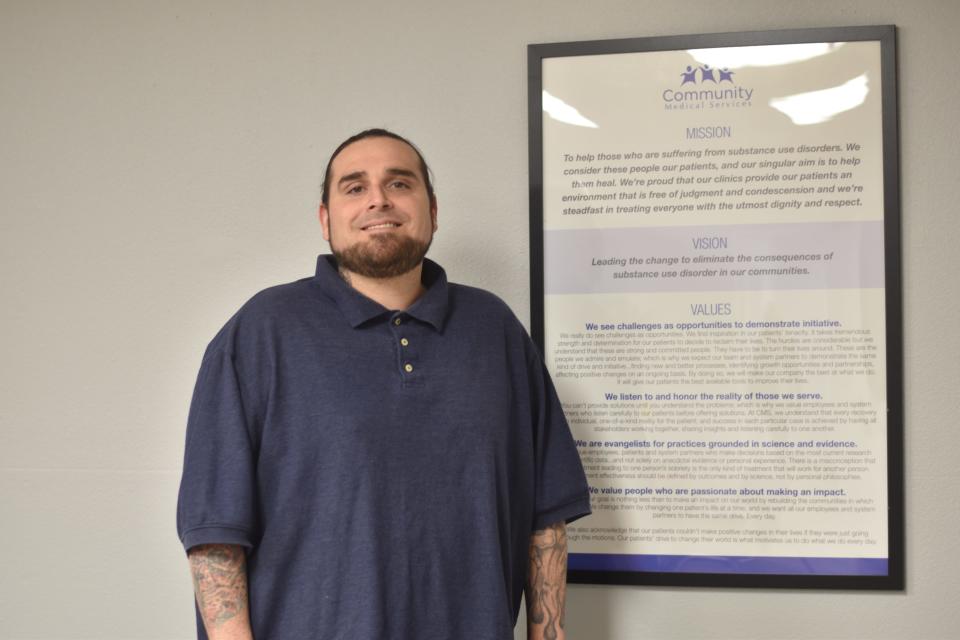How specialty drug courts changed 3 Arizonans’ lives
Bryan Hamilton was abused and given drugs as a preteen. When he became a teenager, he started using heroin and ended up in prison for 16 years where his addiction continued. He has been sober now for seven years.
Desiree Voshefsky developed a drug addiction later in life. Her addiction led to homelessness and prison time. She has now been in recovery for five years.
Brent DeWire started using drugs and alcohol to cope with the death of his mother and his unstable family life when he was young. That led to a life of addiction. After 32 years in active addiction, he has been sober for four years.
What is one thing that these three Tucsonans have in common? All three graduated from Pima County’s drug treatment programs, which gave them another chance at a thriving life instead of a life behind bars.
What is Drug Court and DTAP?
The Pima County Drug Court and Drug Treatment Alternative to Prison program are two separate programs with different screening processes and aim to reduce the recidivism of people with drug-related offenses.
The former is run by the Pima County Superior Court and Adult Probation, and the latter is managed by the Pima County Attorney’s Office.
DTAP is for people who have prison-only plea agreements, while Drug Court has a different screening process and is for people with probation-available plea agreements.
Data from the U.S. Department of Justice in 2017 found that among 34 states, including Arizona, 70% of drug offenders were rearrested within five years of release.
“These programs save lives. They improve family relationships, financial independence, stable housing, mental health, and lead to sustained sobriety. They address an individual coming into the criminal justice system in a holistic way,” said Nahrin Jabro, director of Specialty Court Programs at the Pima County Attorney’s Office.
Both programs offer a range of drug treatment services for people suffering from substance use disorder and facing incarceration. Treatment services include long- and short-term residential treatment as well as intensive outpatient treatment. Both programs also include regular court appearances, urinalysis, and wraparound services like workforce skills development, medical services and housing assistance.
Pima County is just one of the state’s many counties that have drug courts and other specialty courts. The Maricopa County Adult Drug Court Program has been in operation since 1992. According to that county’s 2022 annual report, the county has a 72% success rate and had 296 active participants at the end of the year.
Other counties including Yavapai, Cochise and more all have drug courts or other specialty courts.
These types of courts are particularly significant as the fentanyl crisis spreads across Arizona and the country. Fentanyl, a synthetic opioid, more potent than morphine, while used legally to treat pain, has been made and distributed illegally, contributing to a rise in drug overdose deaths.

Jabro said that fentanyl makes it difficult for people to engage in treatment while they are out of custody. Withdrawal can be scary because “it is so painful,” she said. Mental health conditions also make treatment difficult because people experiencing delusions and paranoia find it challenging to trust anyone or be in a group environment like residential treatment.
According to the Arizona Department of Health Services, more than 2,000 Arizonans died from opioid overdoses in 2021, with fentanyl being the most commonly reported drug in opioid overdoses.
Kindness made the difference
For Desiree Voshefsky, 41, it was the support and kindness of the Drug Court judge and her probation officer that made the difference
Voshefsky was facing a third stint in prison for drug-related charges when she was offered the opportunity to participate in the county’s Drug Court program.
“I had no idea what I was getting myself into with Drug Court. They said, ‘You're getting out on probation.’ I'm like, 'Where do I sign?'” Voshefsky said.
She said she felt supported by the Drug Court judge and her probation officer.
"She's a different type of probation officer altogether," Voshefsky said, noting how much she cared about Voshefsky's well-being.

Voshefsky first went to an inpatient treatment program and then moved into a sober living residence, where she did intensive outpatient programs, and attended group sessions on a variety of topics from substance use to relapse prevention and more. When she was ready, she moved into her own apartment and found a job at Quik Mart, where she brought her skills learned in the programs to help people also suffering from addiction. She currently works as a correctional health supervisor at Community Medical Services.
Voshefsky reiterated that without the mandated drug treatment program, she would likely be incarcerated again. Now, she works to help others who suffer from addiction, and wants to break the stigma of addiction.
“I see a lot of changes in the system in the way probation and parole are looking at substance use disorder,” she said, adding that the more people talk about these issues, the more changes are likely to occur in the criminal justice system.
“Change is going to come from the people in recovery now,” she said.
'You get what you put into it’
DeWire, 49, remembered being in front of the Drug Court judge, and hearing her tell him she would put him somewhere safe. High on drugs, he subsequently went to jail and detoxed, moving through the stages of withdrawal. He was 116 pounds when he went into jail and 152 pounds — 74 days later — when he went to treatment.
DeWire struggled with addiction for 32 years. Eventually, he got to a point where he didn’t want to get high anymore, but he also couldn’t stop on his own. He had to be stopped, he said.
“Drug Court was a blessing for me because I didn't want to be getting high anymore,” he said.

Since graduating from Drug Court, he started his own home repair business and spends much of his life helping others fight addiction.
“I don’t have to get high today because of Drug Court and the (12-step) program I work,” he said.
Just minutes before being interviewed by The Arizona Republic, he said he met someone outside who he could tell was homeless and in active addiction. He spoke to the man and gave him his phone number in case he wanted help getting sober.
For DeWire and many others in recovery, helping people who are in active addiction or working to stay sober is a big part of their own recovery.
‘They gave me a chance’
Hamilton, 41, found Pima County’s Drug Treatment Alternative to Prison Program by happenstance.
He suffered from drug addiction, which began when he was 12, after years of abuse. His drug use eventually led to a 16-year prison sentence.
“I got out of prison in 2015 with just a bad, if not worse, of a drug habit,” he said. However, he soon got a new charge and in preparing to go back to prison, his wife convinced him to get sober first.

While in rehab, he met people who were in the drug treatment program and constantly asked one of the probation officers if he could participate in the program.
Hamilton said his previous charges, which included possession of deadly weapons, made him ineligible for the program. However, after begging them to give him a chance, they did. Hamilton credits this to his initiative to go into detox and rehab on his own accord. He also wrote letters and asked everyone he met to let him participate in the program.
“I told the court judge and everyone involved if they would give me the chance I would not let them or myself down,” he wrote in an email.
He successfully made it through the program and has been helping people suffering from addiction ever since. He currently works as a substance abuse counselor at Community Medical Services.
Hamilton exemplifies the message he teaches to the community: There is hope and people can get better.
“Some people are working on a lifetime of addiction and a lifetime of homelessness,” he said, adding that people should not judge others by their past. “People do get better.”
Numbers show these programs actually work
Jabro said treatment courts work at reducing recidivism, improving quality of life for the person involved, as well as their families and communities, if following best practices.
They also save taxpayers money.
A 2007 study by the U.S. Department of Justice in Portland, Oregon, that looked at the impact of drug courts over 10 years, found that drug courts reduced recidivism rates and resulted in saving taxpayers more than $9 million over a 10-year period.
Jabro said a third-party report analyzing the program in 2017 found taxpayers saved 36% when offenders participate in DTAP, saving a total of $17,336 per person. Other benefits of the program not analyzed include reduced crime, increased tax revenue and reduced spending on child welfare services.
Treatment courts look at “why a person is coming into the criminal justice system, and addressing underlying needs with treatment and resources,” Jabro said.
Other Pima County treatment courts include Mental Health Court, Consolidated Misdemeanor Problem Solving Court, Veterans' Court, and Domestic Violence Court, among others.
Some of the county’s treatment courts are funded by federal grants that help with residential treatment when not covered by insurance, as well as temporary housing assistance in sober living homes, and services including court case management, clinical screenings, and wraparound services.
Jabro also said the way people interpret drug addiction guides how it is treated.
“If we see SUD (substance abuse disorder) as a moral issue, then we will treat it that way through punishment,” she wrote. “If we perceive it for what it is, a disorder that can be treated, then we will treat it and guide an individual toward a path of recovery through rehabilitation.”
Since 2005, hundreds of participants have successfully graduated from Drug Court, while DTAP has been offered since 2010.
In 2022, DTAP had 24 successful completions, while five people absconded from the program, and two people were terminated. Today, a total of 59 participants are active in the program. In January, 16 participants graduated from both programs.
To contact the Pima County Drug Court, reach out to Judge Teresa Godoy at 520-724-3242. To contact the County Attorney's Office about DTAP, reach out by email at info@pcao.pima.gov or by phone at 520-724-5600.
Reach the reporter at sarah.lapidus@gannett.com.
Coverage of southern Arizona on azcentral.com and in The Arizona Republic is funded by the nonprofit Report for America in association with The Republic.
This article originally appeared on Arizona Republic: How specialty drug courts changed 3 Arizonans’ lives

